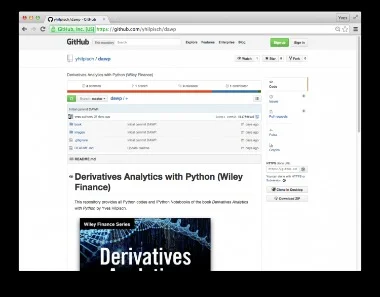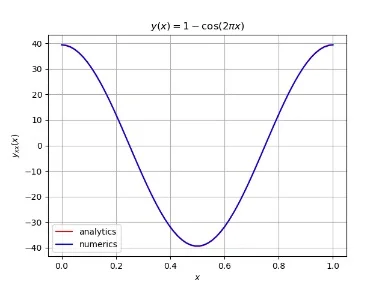Differentiation In Python
Content
Generally, NumPy does not provide any robust function to compute the derivatives of different polynomials. However, NumPy can compute the special cases of one-dimensional polynomials using the functions numpy.poly1d() and deriv(). The derivative of a function is its instantaneous rate of change with respect to one of its variables.

Providing an example that causes your error to occur will probably be needed. It’s possible scipy is calling numpy incorrectly, but very unlikely. See if np.interp() works – it may provide a more helpful error if not. You can easily get a formula for the numerical differentiation of a function at a point by substituting the required values of the coefficients.
If you look at the graph of the derivative function, you get the following form. A wide variety of applied problems can be solved using calculation methods that are based on mathematical principles using digital values as opposed to analytical and symbolic methods. Sometimes we just don’t want to do a tough integral or derivative. Fortunately we have computers, and we can make them do it instead. They may not give us an exact answer, but it is usually close enough for whatever we’re doing.
Run pip install sympy for installing using the pip package manager. Solving a differential with Sympy diff() For differentiation, sympy provides us with the diff method to output the derivative of the function. Later the package was extended with some of the functionality found in the statsmodels.tools.numdiff module written by Josef Perktold which is based on .
Generators In Python
Alternatively, check out our series of great free programming tutorials. The software can use GPUs and perform efficient symbolic differentiation. Theano is a general mathematical tool, but it was developed with the goal of facilitating research in deep learning. Both individuals and organizations that work with arXivLabs have embraced and accepted our values of openness, community, excellence, and user data privacy. ArXiv is committed to these values and only works with partners that adhere to them. You say you want to write the function, so people take you literally. Most of the time people would off course use pre-made libraries for that.
All basic formulas for numerical differentiation can be obtained using Newton’s first interpolation polynomial. Oftentimes, input values of functions are specified in the form of an argument-value pair, which in large data arrays, can be significantly data-intensive to process.

Differential quadrature is the approximation of derivatives by using weighted sums of function values. Differential quadrature is of practical interest because its allows one to compute derivatives from noisy data. The name is in analogy with quadrature, meaning numerical integration, where weighted sums are used in methods such as Simpson’s method or the Trapezoidal rule. There are various methods for determining the weight coefficients, for example, the Savitzky-Golay filter.
Practical Numerical And Scientific Computing With Matlab
While most finite difference rules used to differentiate a function will use equally spaced points, this fails to be appropriate when one does not know the final spacing. Adaptive quadrature rules can succeed by subdividing each sub-interval as necessary. But an adaptive differentiation scheme must work differently, since differentiation is a point estimate. Derivative generates a sequence of sample points that follow a log spacing away from the point in question, then it uses a single rule to estimate the desired derivative.

We could estimate this by finding the area of a rectangle of width and a height of . This would be a very poor approximation for most functions. Input a complex number to that function, perturb the imaginary part, and you basically get machine precision accurate derivatives as long as your function is complex safe and analytic. Many thermodynamic properties are derivatives of other properties, so you may find the need to take derivatives of either data or of an expression. We can use the NumPy function gradient() to take numerical derivatives of data using finite differences, and we can use SymPy to find analytical derivatives of expressions. Given a function, use a central difference formula with spacing dx to compute the nth derivative at x0.
It’s easy to see that increasing the number of trapezoids will greatly increase the accuracy. Instead of computing the tedious integral of by hand we’ll add a method to our handy-dandy program. You know the function, use this knowledge and save time and gain accuracy compared to finite differences. Added directionaldiff function in order to calculate directional derivatives. Also added supporting tests and examples to the documentation. An important consideration in practice when the function is calculated using floating-point arithmetic is the choice of step size, h.
Derivatives
We are witnessing an intensive use of numerical methods across different modern fields of science and technology. Efficient symbolic differentiation – derivatives for functions with one or many inputs.
- These unevaluated objects are useful for delaying the evaluation of the derivative, or for printing purposes.
- Moved import of matplotlib.pyplot to main in order to avoid import error on travis.
- The zeta function in SciPy is Hurwitz zeta function, a generalization of the Riemann zeta function.
- An important consideration in practice when the function is calculated using floating-point arithmetic is the choice of step size, h.
- Svitla Systems specialists have profound knowledge in this area and possess extensive practical experience in problem-solving in the field of data science and machine learning.
Tight integration with NumPy – Use numpy.ndarray in Theano-compiled functions. Transparent use of a GPU – Perform data-intensive computations much faster than on a CPU. These unevaluated objects are useful for delaying the evaluation of the derivative, or for printing purposes. They are also used when SymPy does not know how to compute the derivative of an expression . To calculate double derivative we can simply use the deriv() function twice. At first, we need to define a polynomial function using the numpy.poly1d() function.
Because the points are log spaced, the same rule applies at any scale, with only a scale factor applied. So far we have looked at expressions with analytic derivatives and primitive functions respectively. But what if we want to have an expression to estimate a derivative of a curve for which we lack a closed form representation, or for which we don’t know the functional values for yet. Python package for numerical derivatives and partial differential equations in any number of dimensions. The gradient is computed using second order accurate central differences in the interior points and either first or second order accurate one-sides differences at the boundaries. The returned gradient hence has the same shape as the input array. Many engineering and science systems change over time, space, and many other dimensions of interest.
Derivative In Numpy
You can also use this option to get a slightly more accurate result than the previous option. For example, when solving engineering problems, it is relatively common to use the calculation of the derivative of a function.
This section covers how to do basic calculus tasks such as derivatives, integrals, limits, and series expansions in SymPy. If you are not familiar with the math of any part of this section, you may safely skip it. My colleagues and I have decades of consulting experience helping companies solve complex problems involving data privacy, math, statistics, and computing. SciPy implements complex versions many special functions, but unfortunately not the zeta function.
Numdifftools also provide an easy to use interface to derivatives calculated with in _AlgoPy. The purpose of AlgoPy is the evaluation of higher-order derivatives in theforward and reverse mode of Algorithmic Differentiation of functions that are implemented as Python programs.
Differential quadrature is used to solve partial differential equations. There are further methods for computing derivatives from noisy data. The numdifftools library is a suite of tools written in _Pythonto solve automatic numerical differentiation problems in one or more variables. Finite differences are used in an adaptive manner, coupled with a Richardson extrapolation methodology to provide a maximally accurate result. A Python package for finite difference numerical derivatives and partial differential equations in any number of dimensions. Fractional calculus has become widely studied and applied to physical problems in recent years. As a result, many methods for the numerical computation of fractional derivatives and integrals have been defined.
If they are not evenly spaced, you need a different approach. Browse other questions tagged python scipy numpy or ask your own question. Read about Numba and try it on differentiation and integration. PETSc is a linear algebra library in C , which can be used for parallel computing with vectors and matrices.
SciPy implements the zeta function, but not its derivative, so I needed to write my own version. At last, we can give the required value to x to calculate the derivative numerically. Redistributions of source code must retain the above copyright notice, this list of conditions and the following disclaimer. Made it possible to differentiate complex functions and allow zero’th order derivative. Added – “python -m pip install –upgrade setuptools” in appveyor.yml to avoid build error.
Once upon a time we started a tutorial for MapReduce in numerical computing. Decreasing the step size too small can result in round-off error. However, if we force the step size to be artificially large, then approximation error takes over. First, you need to choose the correct sampling value for the function. The smaller the step, the more accurate the calculated value will be. There’s our course for Python using pandas and plotnine, and our course for R using ggplot2.